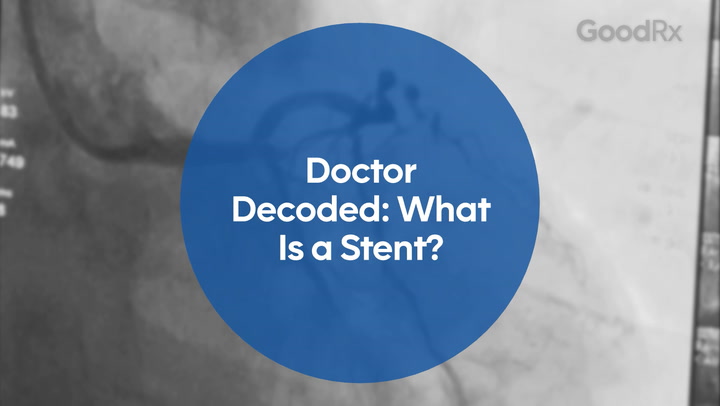
What’s the Difference Between a Heart Attack and a Stroke?
Key takeaways:
Heart attacks happen when part of the muscle of the heart doesn’t get the oxygen-rich blood that it needs.
Similarly, strokes can also happen when a part of the brain doesn’t get enough blood.
Heart attacks and strokes both share common risk factors, but they are two distinct problems, with very different long-term effects.

Heart attacks and strokes are both serious health conditions. The symptoms start suddenly and often come on out of the blue. Their long-term health effects can be potentially life-changing. They share the same underlying cause, and many of the same risk factors — but that’s where the similarities end. Learn the difference between heart attacks and strokes, and how to get the life-saving medical treatment needed when you notice one happening.
Which is worse, a heart attack or stroke?
Coronary heart disease, the disease that causes heart attacks, is the leading cause of death in the U.S. Heart attacks are responsible for 13% of adult deaths. Strokes, the number 5 cause of deaths in the U.S., cause around 5% of adult deaths. This means that heart attacks are deadlier than strokes, though both can cause significant long-term disabilities for survivors.
It’s hard to say whether heart attacks are worse than strokes — or vice versa. Like with many medical conditions, heart attacks and strokes can range from mild and even silent, to life-changing and even life-ending. Many strokes can affect your ability to think, move, and take care of your daily needs, so the long-term consequences for some stroke survivors can be very difficult to manage.
What causes heart attacks and strokes?
Heart attacks and most strokes are both caused by something called atherosclerosis, the buildup of fatty plaque within certain blood vessels called arteries. Plaque is a thick, gritty material made of cholesterol, fats, calcium, and blood cells. It builds up slowly and causes arteries in the body to narrow and stiffen.
Sometimes, a piece of plaque can break off and travel downstream where it can completely block off blood supply to an organ or muscle. If the blockage happens to an artery supplying blood to the heart muscle (a coronary artery), that’s a heart attack. If the blockage happens in the neck or brain, that can cause a stroke.

A note: While all heart attacks are caused by blockages to coronary arteries, strokes can be caused by both blood vessel blockages and bleeds. Strokes caused by brain bleeds are not usually caused by atherosclerosis.
What are the common risk factors for heart attacks and strokes?
The reason that heart attacks and strokes are often lumped together as “cardiovascular disease” is because they share common risk factors such as:
A diet that is high in saturated fats, trans fats, cholesterol, salt, and sugar
Excess alcohol use
Low levels of physical activity
Over time, these risk factors cause atherosclerosis.
How do I know if my symptoms are a heart attack or a stroke?
Picking up on symptoms of a heart attack or stroke quickly is super important to getting the life-saving care you need. The quicker you get treatment, the better your recovery will be.
Heart attack symptoms
Common heart attack symptoms include chest pain or pressure. The discomfort is sometimes in the middle of the chest or over towards the left side. Sometimes the pain moves to the arms or jaw. You might also feel short of breath, sweaty, or even nauseated. But not every person gets classic heart attack symptoms. Women, people with diabetes, and older folks can have “atypical” symptoms such as chest tightness, and jaw and throat discomfort.
Early warning signs of a heart attack might be when you have some of these symptoms with physical exertion, that settle with rest. If that keeps happening, you should seek medical care to check whether you might be at risk for a heart attack.
Stroke symptoms
Stroke symptoms vary widely depending on the area of the brain that is affected. The main thing to be aware of is that the symptoms of a stroke are sudden.
Stroke symptoms include:
Sudden new confusion
Sudden new trouble finding words, talking, or understanding normal conversation
Sudden weakness or numbness in one side of the face or body
Sudden slumping, difficulty walking, or loss of balance
Sudden change in vision
A severe headache that comes on out of nowhere
What are the lasting effects of a heart attack or stroke?
Heart attacks and strokes can both be life-changing events, and each survivor’s recovery is unique. In the short term, most heart attacks leave a person with a lot less stamina than they had before, but treatment can treat the blockage and restore blood flow to the affected part of the heart. Your recovery depends on how healthy you were before your heart attack, how much of the heart was affected, what treatment you had, and how hard you work to regain fitness after.
Since strokes affect brain function, the lasting effects depend on which part of the brain was affected and how much of the brain was affected, as well as the rehabilitation care you have. The outcomes can vary from complete recovery to permanent disability.
Preventing heart attack and strokes
When it comes to preventing heart attacks and strokes, it’s a 2-for-1 win-win situation.
In other words, anything you can do to address the modifiable risk factors for atherosclerosis can help to prevent heart attacks or strokes from happening.
In practice, that means:
Quitting smoking, which can reduce your risk by as much as 50%
Getting your blood pressure checked, and treated (if high)
Knowing your cholesterol levels, and taking steps to improve these
Getting checked for prediabetes or diabetes, and taking steps to reverse it
If you’ve already had a heart attack or stroke, keeping up with your health checks and taking stroke and heart attack prevention medication can significantly reduce your risk of having another event.
National programs like the Centers for Disease Control and Prevention’s Division for Heart Disease and Stroke Prevention support local prevention programs across America that tackle the reversible risk factors that disproportionately affect historically underserved populations.
The bottom line
Heart attacks and strokes are two different disease processes that share a common root cause. You can reduce your odds of both by modifying the shared risk factors: quitting tobacco use; screening for and treating diabetes, high blood pressure, and high cholesterol; getting enough physical activity; maintaining a healthy weight; and moderating the amount of alcohol you drink.
Know the symptoms of heart attacks and strokes and get immediate emergency medical care if you or someone else could be having one. The faster a heart attack or stroke gets treated, the higher the chances of recovery.
Why trust our experts?


References
American Heart Association. (n.d.). Heart attack, stroke and cardiac arrest symptoms.
American Heart Association. (n.d.). Stroke symptoms.
American Heart Association. (2020). Atherosclerosis.
American Heart Association. (2021). 2021 heart disease and stroke statistics update fact sheet.
Centers for Disease Control and Prevention. (2022). Division for Heart Disease and Stroke Prevention at a glance.
Centers for Disease Control and Prevention. (2022). Heart attack symptoms, risk, and recovery.
Centers for Disease Control and Prevention. (2022). Heart disease and stroke.
Mackay, M. H., et al. (2011). Gender differences in symptoms of myocardial ischaemia. European Heart Journal.
World Health Organization. (2021). Cardiovascular diseases (CVDs).

























